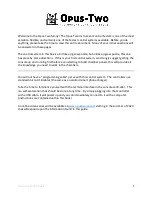
Operating Manual
30
1300-87076-1A Rev. 1
Tap the
Sample
column to change the sample name. The
Blank
can also be renamed, but this is NOT
suggested. You need to measure the
Blank
again if the original blank data has been renamed.
Note
: Only one data item can be checked at one time.
The graph of measuring samples can be enlarged or minimized. The axis can be moved by dragging the graph.
Long press the x- or y-axis on the graph to turn the modified graph back to default.
Figure 25. Graph Tab Page
8.1.2 Protocol Operation
1. On the main menu, tap on the
More Assays
icon then the
Factor Method
icon to enter the protocol section.
2. Ensure the sample window and cover window on the detection arm are clean.
3. Insert the
Analysis Wavelength
(required).
4. Insert the
Units
(required).
5. Insert the
Conversion Factor
if the user needs to convert absorbance to concentration (optional).
6. Insert the
Correction Wavelength
if the user needs bichromatic normalization (optional).
7. Add appropriate solution of at least 1 µL and select the
Blank
icon to establish blank data.
8. Wipe away the blank solution off the sample window and cover window.
9. Add your sample of at least 1 µL and select the
Measure
icon to enter sample measurement.
10. After the experiment, clean the sample window and the cover window on the detection arm with a lint-free
wipe. Use deionized water, ethanol or isopropanol if needed.
11. The correction function is optional and can be turned on/off any time.
12. The default of the
Auto Run
function is off. If
Auto Run
is on, sample measurement will be performed
automatically after closing the detection arm.
Note:
1. During the measurement, users can change the conversion factor. This is an optional function.
2. During the measurement, users can change the correction wavelength. This is an optional function.















































